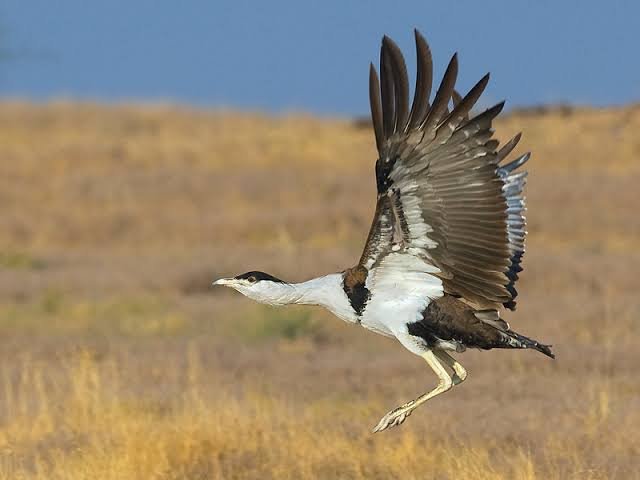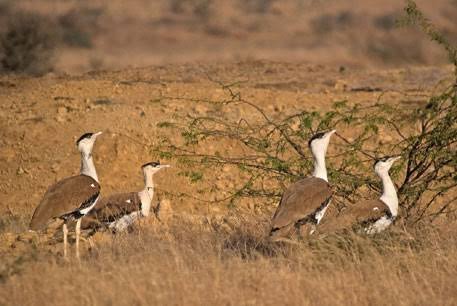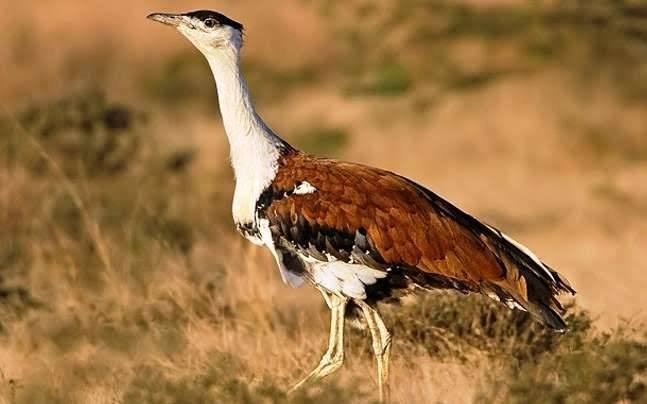64 Great Indian Bustards spotted in Jaisalmer during “WATERHOLEs” survey

That is a really important remark! 64 Great Indian Bustards were sighted in Jaisalmer during the yearly “Waterhole” survey. This survey, which is a means of taking a wildlife census, started on May 23, the night of the full moon, or Vaishakh Purnima, and lasted for 24 hours, ending on May 24. Seeing these birds, often referred to as “Godawan,” is especially significant because the Great Indian Bustard is in danger of going extinct.
In the Ramdevra region, there were 21 bustards counted, while 43 were found in locations such as Sudasari, Gazai Mata, Jamra, Chouhani, Sipla, and Barna. This encouraging trend, which shows an increase in their numbers from the 42 recorded in 2022, gives hope to conservation efforts.The study was unable to be completed in 2023 because to rains brought on by a western disturbance.

It’s heartening to see such progress in the conservation of these majestic birds, which are an integral part of India’s natural heritage.
Table of Contents
What are the main threats to Great Indian Bustards?

The Great Indian Bustard (GIB), a critically endangered bird species native to the Indian subcontinent, faces several threats that are driving it toward extinction. Here are the primary threats to the GIB:
- Loss of Habitat and Fragmentation: The GIB is mostly found in the grasslands and scrublands of India’s Deccan Plateau and Thar Desert.
- However, because of habitat degradation brought on by increased agriculture, industrial development, and infrastructural developments, its range has drastically shrunk.
- These days, the bird is restricted to small areas in the states of Andhra Pradesh, Gujarat, Rajasthan, Maharashtra, and Karnataka.
- Electrical Wires: The birds are seriously threatened by the high-tension power wires that cross the GIB’s habitat. GIBs are prone to collide with these electrical lines due to their small and weak frontal vision, which frequently results in death.
- Hunting:
- Even though it is forbidden to hunt GIBs in India, the species is nevertheless in risk due to occasional poaching instances.
- Use of Pesticides: When pesticides are used extensively in agricultural fields close to GIB habitats, harmful compounds may build up in the bodies of the birds, which could have an adverse effect on their reproductive and general health.
- Free-ranging Dogs: During the breeding season, when the dogs may feast on eggs and chicks, the growing number of free-ranging dogs in the GIB’s habitat poses a threat to the birds.
Conservation Efforts:

- Critical GIB habitats, such the Deccan Plateau’s grasslands and the Thar Desert, are being identified and protected.
- We’re putting underground cabling and bird diverters in as mitigating techniques for power lines.
- The goal of captive breeding initiatives is to boost the GIB population before releasing the birds back into the wild.
- Campaigns to raise awareness and engage the community are essential to the long-term survival of this amazing species.
It is imperative to strike a balance between India’s aspirations for renewable energy and conservation needs in order to safeguard the Great Indian Bustard, which is extremely threatened.
for more latest information follow our official website.

